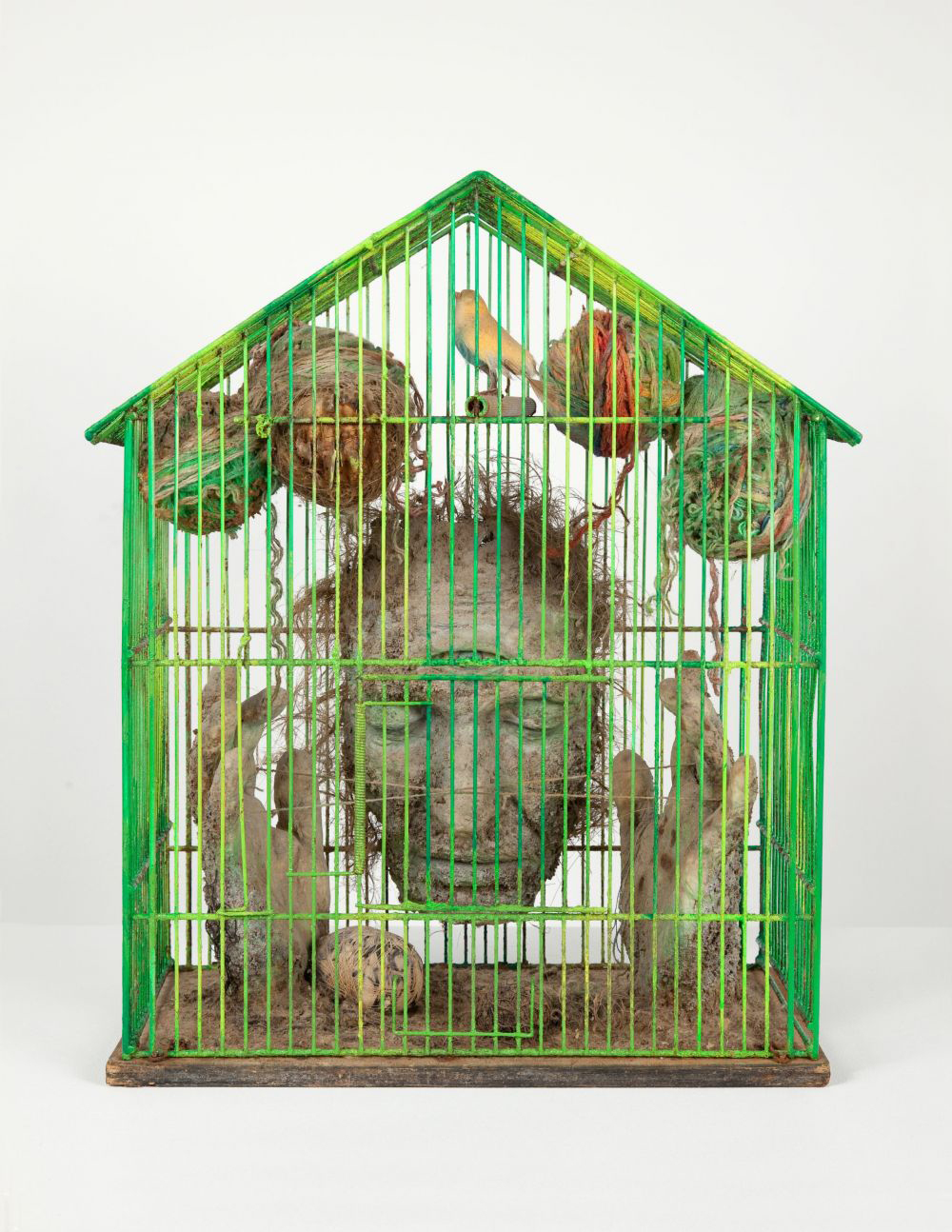At Marc Selwyn Fine Art, Los Angeles, works by Tetsumi Kudo, Lucas Samaras, Paul Thek and Max Hooper Schneider reflect on the quest for self-optimisation

In an era marked by a seemingly endless quest for what is currently dubbed ‘self- optimisation’ – ever more successful and, crucially, attractive versions of ourselves – this group exhibition presents four alternatives for personal transformation. Per the show’s accompanying release, Tetsumi Kudo, Lucas Samaras, Paul Thek and Max Hooper Schneider (the youngest artist in this grouping by almost five decades) employ containers – cages, boxes and vitrines – as placeholders for the earthbound, constrained corporal body, their contents thus representing their makers’ desired ascensions to a higher realm.
Self-optimisation can be understood through the lens of humanism, a school of thought that attaches supreme importance to humanity rather than the natural or divine, as if by unlocking our ideal selves we can attain godliness. It’s a philosophy Tetsumi Kudo particularly abhorred, and the Japanese artist’s own work challenged its primary tenet by depicting the human form, his own included, diminished, dismembered and in stages of decay amid the flora that would ultimately subsume and incorporate it. Kudo was active in Japan’s Neo-Dada movement before relocating to Paris in 1962. Many of his sculptures from the 1960s and 70s utilise his signature enclosures stuffed with replicas of human heads (the artist’s included) and replicas of plants; the works evoke at once biospheres and funerary tombs. In this show, two painted birdcages, Portrait of the Artist, Buddha in Paris (Meditation entre futur programmé et mémoire enregistrée) (Portrait of the Artist, Buddha in Paris [Meditation between the programmed future and recorded memory], 1976) and Meditation Between Memory and Future (1978) contain disembodied and seemingly rotting heads and hands crammed amid fake flowers and artificial soil. The work’s allegory of metamorphosis and rebirth via corrosion of the flesh seems clear.
Kudo’s blurring of corporal and technological elements presages the work of Max Hooper Schneider, who applies experimental techno- logical processes to organically suggestive elements (sometimes incorporating live animals, as in dialectrix: division apteronotus [jesus saves], 2020), a neon-lit aquarium featuring live black ghost knifefish exhibited at François Ghebaly gallery in LA last summer). Adjacent to the lightbox-ensconced glazed ceramic Battle Vest (2018), from a series of the same name, is the sculpture Crisis Hotline (2020), a metal cage through which a found neon sign is visible, positioned in a fabricated habitat whose miniature flora evokes Kudo’s. Hooper Schneider was trained in landscape architecture, and his work methodically explores the technical properties of natural and synthetic elements to posit a hybrid bionic future.
By contrast, Paul Thek’s vision of alternate realms is emphatically, if wryly, rooted in spiritual ascension. In 1967, the same year that his installation The Tomb (a lifesize entombed effigy of the artist) shocked the New York artworld, Thek abruptly moved to Europe, where he would create staged environments and ceremonies referencing the ritual and pageantry of the Catholic processions he admired. Two intimate structures on view here, Untitled #73 (1964) and Fish Tank (1969), are exemplary of the artist’s prior ‘technological reliquaries’ series and a hint of his work to come. The meat and amputated-limb sculptures encased in Formica and Plexiglas containers for which he had first gained notoriety are reminiscent of holy tombs whose sides have been made transparent to reveal their rotting saintly inhabitants, in a gesture of both homage and irreverence.
If Thek looks to a universal hereafter, Lucas Samaras’s practice turns inward. Along with four of Samaras’s manipulated Polaroid self-portraits from his Photo-Transformation series (1973–76), two of the artist’s celebrated assemblage boxes, whose interiors frequently incorporate mirrors, photographs and personal ephemera, and which function as self-portraits, are included here. The open-lid arrangement of these boxes aligns them with Hooper Schneider’s, Kudo’s and Thek’s enclosures – whose choices of siding material allow the viewer to peer inside. One is left with the sense that, rather than hindering the artists who created them, these allegorical vessels serve as framing devices. The works feel tethered to their makers’ respective mortal coils by the very visual seductiveness of their forms, suggesting that perhaps transcendence is more than just a box away.
Technologies of the Self, Marc Selwyn Fine Art, Los Angeles 3 April – 15 May